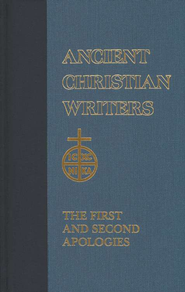In my last two posts I’ve discussed four of the biggest beasts in Torrey. In my first post I discussed Frankenstein’s monster and Melville’s Moby Dick. In my last post I looked at Spencer’s great dragon and Dante’s Satan, all the while comparing the beasts to one another. Finally I have arrived at the final beast. This beast is so great that it has beasts beneath him that he empowers. It is Satan, the Dragon of Revelation.
Revelation’s Dragon
In Revelation, John writes down the images and visions that Jesus shows him. After seeing many different things, he sees another sign.
And another sign appeared in heaven: behold, a great red dragon, with seven heads and ten horns, and on his heads seven diadems. His tail swept down a third of the stars of heaven and cast them to the earth. (Rev 12:3-4)
 The great red dragon of revelation does not have long descriptors like those of the other monsters, but he is much greater. John sees him in heave and witnesses his magnitude. The dragon has seven heads (more than Dante’s three faces), ten horns, and seven diadems on each head. The diadems show that the beast is royally adorned and the horns denote power, more power than he has heads even. His tail is larger than Moby-Dick’s or Spencer’s dragon as it wipes out a third of the stars in the heavens and casts them down to earth (this may or may not be the angels, which still shows that he has power since he was able to deceive them to follow him).
The great red dragon of revelation does not have long descriptors like those of the other monsters, but he is much greater. John sees him in heave and witnesses his magnitude. The dragon has seven heads (more than Dante’s three faces), ten horns, and seven diadems on each head. The diadems show that the beast is royally adorned and the horns denote power, more power than he has heads even. His tail is larger than Moby-Dick’s or Spencer’s dragon as it wipes out a third of the stars in the heavens and casts them down to earth (this may or may not be the angels, which still shows that he has power since he was able to deceive them to follow him).
The vision continues:
Now war arose in heaven, Michael and his angels fighting against the dragon. And the dragon and his angels fought back, but he was defeated and there was no longer any place for them in heaven. And the great dragon was thrown down, that ancient serpent, who is called the devil and Satan, the deceiver of the whole world— he was thrown down to the earth, and his angels were thrown down with him. (Rev 12:7-10)
The dragon was in heaven and fought the great angel Michael. The dragon, who is revealed to be the serpent Satan, looses and is cast down out of heaven to the earth. But even here he is shown with power. He is called ancient and the deceiver of the whole world. How powerful does he have to be to deceive the whole world? Even ancient is a display of strength as he is not some young force. Even being cast down out of heaven, he has strength. Continue reading



